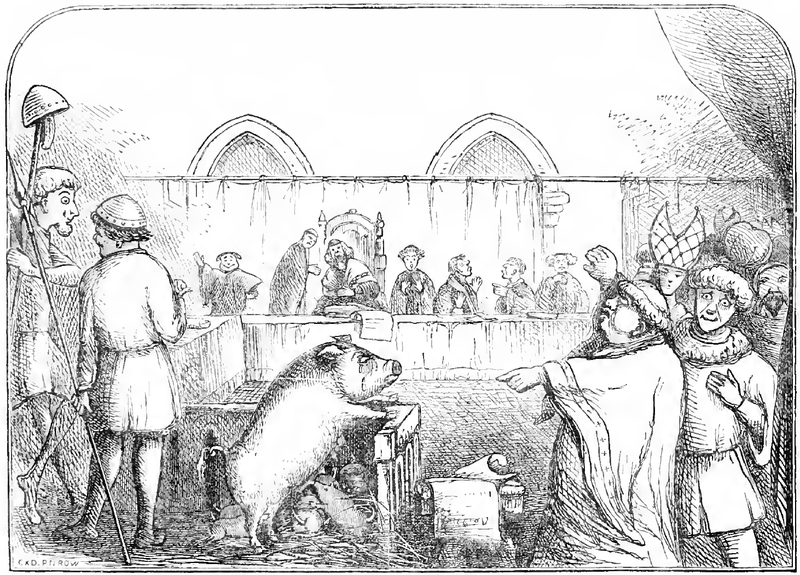Animals were put on trial in medieval times and routinely sentenced to death

Animals on Trial: A Dark Chapter in Medieval Times

In medieval times, the legal system took a peculiar turn that might seem bizarre to us today. It was a time when animals were put on trial, accused of committing various crimes and offenses. These unique court proceedings not only involved domesticated animals like pigs and cows but also extended to creatures of the wild such as rats and insects. This unconventional practice may seem absurd to us now, but it was a severe matter back then, with animals often being found guilty and sentenced to death.
Unsettling Reality
One of the earliest recorded cases of an animal trial occurred in 824 AD in Western Europe. In this instance, a sow and her six piglets were accused of infanticide. The case was taken before the court of law in Lavegny, a small village in France. Astonishingly, the sow was found guilty and sentenced to death by hanging. This peculiar trial painted quite an unsettling picture of the justice system in medieval times.
However, it is important to note that these trials were not held solely for amusement or frivolous purposes. In medieval beliefs, animals were considered capable of rational thought and were believed to possess the ability to understand right from wrong. Consequently, if an animal was found guilty, it was perceived as a direct representation of the Devil’s influence, leading to its punishment.
The Procedure
The animal trials were conducted in a manner similar to human trials. Animals were arrested, interrogated, and appointed a legal representative who would argue their case. The proceedings were overseen by judges, prosecutors, and defense attorneys. These trials were even subject to appeals. Animals were assigned lawyers who were often selected from the local legal community. The accused creatures were granted the same rights and privileges afforded to human defendants, albeit within the limitations of their animalistic nature.
Severity of Punishment

The punishments meted out to animals varied based on the nature of the offense and the legal system prevalent in each region. Often, the most common form of punishment was the execution of the condemned animals. Methods of killing ranged from hanging to burning at the stake. In some cases, animals were deemed excommunicated, banished from the community, or subjected to confiscation of property. The severity of these sentences reflects the gravity with which the medieval justice system approached these trials.
Historical Significance
While these animal trials may seem absurd and even cruel to us today, they hold historical significance. They provide valuable insight into the mindset and cultural beliefs of the medieval era. These trials were a reflection of the time’s religious fervor, with animals being seen as instruments of the Devil and their punishment aimed at warding off evil. The practice was not limited to any specific region, as animal trials were conducted across Europe for several centuries.
Today, animal trials serve as a dark reminder of the cruelty and superstitions that prevailed during medieval times. It is a testament to how societies evolve and how our understanding of justice has transformed over the centuries. The legal proceedings that once saw animals on trial have faded into the annals of history, reminding us to appreciate the progress made in our legal systems and our steadfast commitment to justice for all.
Tags
Share
Related Posts
Quick Links
Legal Stuff

